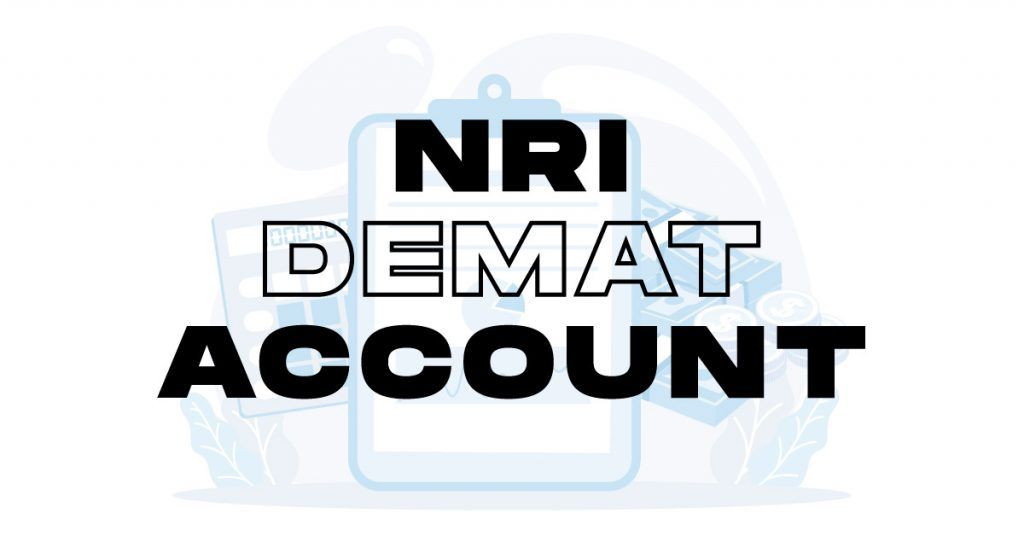What is OFS in IPO, and How to Apply?
Written by Upstox Desk
Published on October 17, 2025 | 9 min read

To operate on a large scale, every organization often needs a lot of capital. It can raise money from a variety of sources. To finance expansion, however, businesses employ a combination of institutional accruals, loans, and stock.
In this situation, a business must make an Initial Public Offering (IPO) to raise money from the stock markets for the inaugural period. Corporate sponsors have the option to dilute their interests and can offer additional equity rights during an IPO.
However, if sponsors wish to reduce a key stake following the recent IPO, what solutions do they all have? They can choose Offering For Sales (OFS) or selling equity in tiny amounts. In this article, we'll discuss the details of the offer for sale meaning, how it works, and how to apply for it.
What Is an Offer For Sale in IPO?
The OFS mechanism was originally developed and implemented by the Securities and Exchange Board of India (SEBI) in 2012 to make it simpler for founders of publicly traded firms to reduce their shareholding and conform with the required public shareholding standard. 200 largest corporations by market capitalization are eligible to use the Offer for Sale mechanism.
To generate more capital for the business, the promoters (owners) must propose to sell their stakes. Offering equity to external venture capitalists is mostly done to acquire monetary resources for expansion and development, among other uses.
Moreover, a corporation's economic issues do not cease with its initial public offering. A business may occasionally need more funding to reach its objective.
Unique Conditions On An Offer For Sale IPO
Here are some unique conditions under which an OFS turns out to be a suitable option:
- The issued shares are reserved for retail investors in an amount of at least 10%.
- A minimum of 25% of the available shares are reserved for mutual funds and insurance firms.
- Sponsors can sell firm shares straightaway through an Offer for Sale rather than being required to pause for an IPO.
- The Offer for Sale is open to shareholders with greater than 10% ownership of a corporate entity.
- The trading hours, from 9.15 AM to 3 PM, are available for placing an OFS.
- Any allocations won't be made if the offer value falls below the prevailing market price.
- The leading 200-share market businesses are the only ones with access to this service. Stock capitalization is used to determine the position.
- Before the OFS, the organization must notify the stock markets at least 2 days in advance.
Several government entities employ this sort of approach to decrease ownership with the aid of an open market. Rather than being handed to the firm for its requirements, the bidder receives the money the company generated in return for relinquishing possession of the equity.
What differentiates OFS from FPO?
A firm may acquire money by distributing more stocks in two different ways: through an OFS and a Follow-on Public Offering (FPO). These two approaches, however, differ in certain ways. An FPO typically involves a drawn-out procedure.
The business must publish a fresh proposal and present it to the SEBI. The business then has to bring on executives to handle the transaction. Equity sales typically take 3-5 working days to complete. An OFS, in comparison, is significantly easier. The business is not required to submit any official documents. Additionally, the purchase of shares usually requires one trading day.
Pros And Cons Of OFS
Pros of OFS
-
Reduced Price
One of the main advantages of trading through OFS for ordinary traders is the lower price. After purchasing stocks through OFS, individual investors are typically given a reduction in the market price. In these deals, the markdown is approximately in the ballpark of 5%.
-
Little Paperwork
System-based auction is used throughout the whole OFS cycle. Thus, the investor is only obligated to complete a small amount of paperwork. Because of this, OFS is a straightforward procedure.
Cons of OFS
-
Insufficient Reservations for Retail Investors
According to SEBI regulations, a minimum of 10% of the investment must be set aside for retail investors. This could increase to 20% in the case of Public Sector Undertakings (PSUs). Nevertheless, this is a much smaller quota than the 35% allowed to retail investors in IPOs.
-
Short Timeframe for Bidding
An OFS's issuing period cannot last longer than one trade day. In contrast, an FPO can be available from 3-10 business days. Two business days before the OFS, the issuing company must notify the stock markets. It is crucial to stay informed to prevent missing out on a wonderful investing possibility.
How to apply for OFS?
Investors can now apply for OFS much more easily, thanks to the introduction of digital transactions and trade facilities. You must, however, have both a [trading account]https://upstox.com/trading-account/) and a Demat account to be able to achieve this.
Although the technical aspect is not challenging, an owner must learn every step of the OFS application procedure in full detail. In the instance of OFS, the corporation uses the bidding procedure to determine prices. Retail investors might use the cut-off value or a specified price to place bids.
Furthermore, the OFS application procedure resembles the manuscript phase of an IPO. After evaluating investment opportunities at various price ranges, the cut-off pricing is chosen.
How to place a bid in OFS?
If the client is licensed, offers are sometimes placed directly by the exchange or through the assistance of a stockbroker. The exchange's website allows users to view the level of bidder interests at various price points. A good indication of the need for an OFS can be obtained from the subscriber request and the suggested pricing.
In an OFS, you must bid at a rate greater than that of the "floor price" if you want to receive shares. An OFS floor price is the lowest cost at which you can apply. Any offer that is less than this amount is not considered.
The Bidding Process
There are typically two ways to distribute OFS shares:
- Single Clearing Price: When there is only one clearance price, all investors receive their shares at the same price.
- Multiple Clearing Prices: If multiple clearing prices exist, shares are distributed to investors according to pricing precedence.
For instance, two competitors, Aniket and Gopal, submit an OFS application. Gopal offers Rs. 60 per share, whereas Aniket offers Rs. 50 per share. Under this case, when shares are distributed, Gopal would indeed be given preferential treatment over Aniket.
The cut-off price alternative, fortunately, is another choice open to traders. A cut-off price is the cheapest cost at which a shareholder is allotted shares throughout an OFS. Throughout this method, the investor won't have to be concerned about price formation during the bidding process and may request shares only at the cut-off price.
How many bids can you submit?
Every investor will have the option to submit offers at various price points. To qualify for a grant via OFS, the entire bid amount must be in the Demat account. Although there is a likelihood that bids will change throughout the day, the final allocation is announced after the day.
If there is a fractional allocation, the extra money is paid to the shareholders that day. In contrast, if there is an oversubscription, the shares are distributed proportionately for bids filed at the cut-off price, exactly like in an initial public offering.
The Takeaway
The OFS process only takes a day, and the documentation is straightforward. Promoters frequently give retail investors a discount off the floor price, which is another benefit of OFS. Given that there are few fees, it is more affordable than purchasing stocks on the open market.
Promoters can easily and conveniently sell their shares in a publicly traded firm through an OFS. Promoters may employ this approach to lower the percentage of publicly traded companies they own. Additionally, purchasing shares in an OFS is simple if you're an investor.
Therefore, there is absolutely no reason to postpone taking part in an OFS if the business has strong prospects.
Frequently Asked Questions (FAQS)
Q. What is the eligibility for retail investors?
The Non-Institutional Investors (NII) category, which includes both the retail and non-retail categories, accepts bids from retail investors. SEBI regulations require companies to provide a minimum of 10% reservation for retail investors.
Q. When should you invest in an OFS?
Organizations raise new money and reduce promoter interests by using the OFS route. In contrast to other methods of fundraising, this is a more straightforward procedure. If the business has a solid track record and has room for further expansion, it is great to put money in an OFS.
Q. Why did my bid get rejected?
Below-floor bids are not accepted. The final price discovery will determine the allotment. The floor price is typically established at a reduction from the going rate.
Q. Is it possible to modify the bids?
Bids supported by 100% margins may change anytime throughout the OFS hours.
Q. What is a Floor Price?
The rate at and beyond which an investor may make bids is known as the floor price. On T-2/T-1 day, sellers are required to submit a floor price (T being the day of OFS).
Q. What fees and costs are associated with OFS?
For an OFS, the following fees are applicable: brokerage, exchange transaction fees, and Securities Transaction Tax (STT).
Q. What effect does an OFS have on a stock?
A reduced price has been selected as the offer price for OFS. Although it stands to reason that the stock price would decline, this is not always the case. Because the offering firm encourages investors to gain from applying through the OFS, it is being offered at a reduced price. Additionally, the number of authorized shares is unaffected by OFS.
About Author
Upstox Desk
Upstox Desk
Team of expert writers dedicated to providing insightful and comprehensive coverage on stock markets, economic trends, commodities, business developments, and personal finance. With a passion for delivering valuable information, the team strives to keep readers informed about the latest trends and developments in the financial world.
Read more from UpstoxUpstox is a leading Indian financial services company that offers online trading and investment services in stocks, commodities, currencies, mutual funds, and more. Founded in 2009 and headquartered in Mumbai, Upstox is backed by prominent investors including Ratan Tata, Tiger Global, and Kalaari Capital. It operates under RKSV Securities and is registered with SEBI, NSE, BSE, and other regulatory bodies, ensuring secure and compliant trading experiences.

























